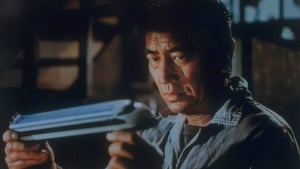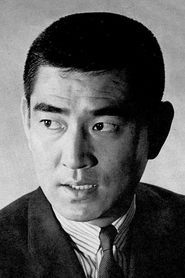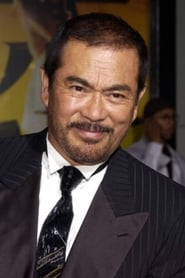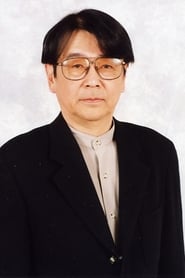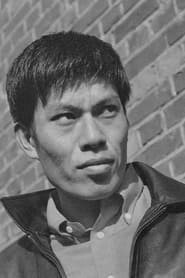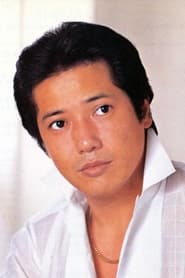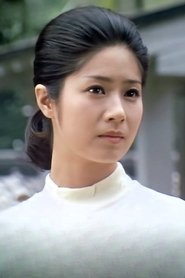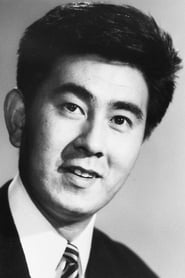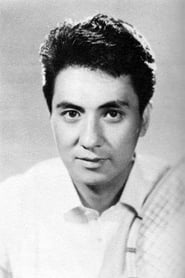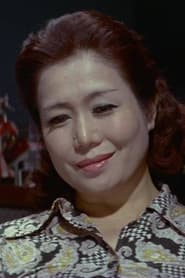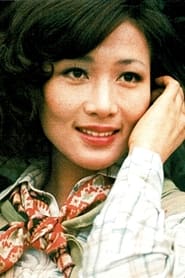Cast
View AllKen Takakura
as Tetsuo Okita
Sonny Chiba
as Aoki
Kei Yamamoto
as Masaru Koga
Eiji Gō
as Shinji Fujio
Akira Oda
as Hiroshi Ôshiro
Raita Ryu
as Kikuchi
Masayo Utsunomiya
as Yasuko
Ken Utsui
as Kuramochi
Yumiko Fujita
as Akiyama
Yumi Takigawa
as SAS Staff
Etsuko Shihomi
as Telephone Operator
Fumio Watanabe
as Miyashita
Toyoto Fukuda
as
Hiroko Fuji
as
Junko Matsudaira
as
Crew
Director
- Junya Satō
Producer
- Kanji Amao
- Sunao Sakagami
Reviews
giant13
In the early 70s, disaster movies started gaining popularity with the likes of <i>Airport</i> (1970), The <i>Poseidon Adventure</i> (1972), <i>The Towering Inferno </i>(1974), and <i>Earthquake</i> (1974). These movies killed it at the domestic and international box offices. Toei, one of the Big Four Japanese film studios at the time, noticed and wanted to take advantage of the trend. Japan’s famous bullet train system’s first two rail lines, Tokaido and San'yō, were opened in 1964 and 1972, respectively. The mode of travel was, to that point, synonymous with Nippon, so the Toei execs wanted to try and use the iconic Shinkansen. They brought in journeyman director/writer, Jun’ya Satô to help adapt Arei Katô’s book into the first big Japanese disaster movie (non-Kaiju). Satô wrote the first half and established Toei screenwriter Ryûnosuke Ono wrote the second; this took about a month to complete.
Initially Toei and Satô wanted international movie star Bunta Sugawara to play Okita, the main role; however, Bunta’s wife said that it wasn’t a good fit for her husband because “the train was the main character.” The role was then offered to Ken-san, who was trying to get released from Toei for years, and a deal was made for him to star. The role of Koga was written for Yoshio Harada, but his casting also didn't work out, therefore Toei got Kei Yamamoto to fill the role since he had a similar look to Harada. Since Toei was trying to follow the formula of the American disaster movies, they also casted Sonny Chiba, Tetsurō Tamba, Kunie Tanaka, Takashi Shimura, and more to make it a star-studded billing. Due to the Japanese title (<i>Shinkansen Daibakuha</i>, meaning "<i>Bullet Train Big Explosion</i>"), the Japanese National Railway (JNR) was not going to cooperate with the studio. A 1/20th scale model bullet train set was produced for most of the exterior action shots. The film finished shooting in about 40 days.
Shinkansen Daibakuha’s story follows three entities: the JNR, the police, and the societal rebel bombers. Due to the Japanese economic slowdown of the late 60s and early 70s, many people were dealing with hard times. Small business owners were losing their livelihoods. Young people were moving away from their countryside hometowns and working low wage jobs in big cities, such as Tokyo. The three bombers in then film all came from backgrounds dealing with financial strife, and they all wanted to do something about it. The three decide to hold a bullet train hostage with a bomb and extort billions of yen from the Japanese government.
The Hikari 109 (“light train 109”) is traveling from Tokyo to Hakata on both the Tokaido and San'yō bullet train lines, which is about a 700 mile stretch of track. The bombers, led by Ken-san, attach the bomb to the train and inform the JNR that the train will blow up if it slows down past 50 mph (80 km/h). With only several hours to prevent the bomb to go off, the JNR has to expertly guide the train through the long stretch of railway. The police’s role is to keep investigating the calls each time Ken calls to issue his demands to the JNR and Japanese government. The police try to continuously track and arrest the bombers to prevent the government from paying the ransom, sometimes conflicting with the JNR command station’s wishes. The train staff must deal with the passengers’ increasingly annoyance (and eventually desperation) without letting them know about the bomb on board. So of course, this provides the audience with suspenseful scenes throughout the long runtime with all three entities and the bystanders involved in the disastrous scenario.
Speaking of runtime, Bullet Train is just over 2 and half hours long. I do think this will become problematic for some contemporary viewers. The long run time can be explained by the amount of time to cleanly resolve all story threads with the main players. In most movies such as these, a writer would not dare try to make sympathetic antagonists, but that’s just what Satô and company accomplished with this film. Takakura, the main focus, and his relationship with his fellow bombers exploit the humanism in us, the audience. You can tell that they don’t actually want to kill anyone, they just want a better life that they think they deserve–a common ideology throughout human history. Even though it’s through an immoral method, the viewer sympathizes and wants to cheer for them to get away with it. Both Ken-san’s screen presence and acting demeanor alone make the film work as a disaster / crime drama. Bunta Sugawara, a legend in the Japanese crime genre, would not have brought the same type of sympathetic nature to the table. Sugawara was a master at performing a menacing presence, not the sort of stoicism that Ken-san depicted in most of his pictures.
Some very notable aspects of the film that set it apart from other standard crime genre flicks are as follows. During the suspenseful scenes, you’ll see characters’ faces sweating more than 90 degrees on a humid August day–they all do it, and with that staple Japanese, facial snap-zoom. The soundtrack features tracks that evoke both Lalo Schifrin’s <i>Dirty Harry</i> jazz score and slow, swelling vocal harmonies akin to Ennio Morricone’s <i>A Fistful of Dynamite</i> theme. The set designs and shooting locations are extensive and realistic–apparently the actual JNR control room was secretly filmed, by a German actor pretending to be an engineer, to provide Satô with the means to create the JNR control room in the movie. The bomb wiring explanation is feasible and realistic, which was based off of Satô’s past experience with radios. Finally, the train engineer Aoki was written to be a passive character, but Sonny Chiba made the character very animated that added depth to the train scenes that wasn’t intended by the screenplay.
<i>Bullet Train</i> did not receive the type of marketing it deserved from a company like Toei, so it did not do well at the Japanese box office initially. Thanks to the film’s French box office success, released 6 months later as <i>Super Express 109</i>, the film was able to earn a re-release in Japan late with the proper advertising this time and it was a hit. Unfortunately, the film was butchered when cut for other international releases, totally removing all back story for the bombers and reducing the runtime to 115 minutes, which hurt its reception in the USA. Although one can recognize this as the direct inspiration for other American action films like <i>Speed</i> (1994), it's settled that <i>Bullet Train</i> has earned its spot in cinema history as an essential Japanese disaster flick alongside the likes of Godzilla flicks like <i>Ghidorah, the Three-Headed Monster </i>(1964) and Kenji Fukasaku’s <i>Virus</i> (1980).
Jan 16, 2022
Thematic Analysis
As a dramatic work, The Bullet Train examines complex human relationships and emotional struggles against the backdrop of a period setting that reflects societal issues of its time. The character development particularly stands out, offering viewers a chance to reflect on their own life journeys.
Director Junya Satō brings their distinctive visual style to this film, continuing their exploration of themes seen in their previous works while adding new elements. Their approach to character development and emotional depth creates a viewing experience that rewards close attention.
Released in 1975, the film exists within a cultural context that now offers viewers historical perspective on the social issues of that era. Its reception demonstrates the diverse reactions to its artistic choices and its place in cinema history.
Did You Know?
- The production of The Bullet Train took approximately 23 months from pre-production to final cut.
- The final cut of the film runs for 152 minutes, though the director's initial assembly was reportedly 176 minutes long.
- Several scenes were filmed in multiple locations to capture the perfect setting.
- Some visual effects sequences took up to 4 months to complete.
- The costume department created over 375 unique costume pieces for the production.
Historical Context
- In 1975, when this film was released:
- Environmental awareness was growing as a social concern.
- Economic recession and oil crises were affecting global economies.
- The film industry was dominated by major studios, with independent cinema still in its early development.
How This Film Stands Out
While The Bullet Train shares thematic elements with other films in its genre, it distinguishes itself through its unique approach to storytelling, visual style, and character development.
Unlike Telefon, which focuses more on action than character development, The Bullet Train subverts genre expectations by exploring its themes with greater nuance.
While films like Inuyashiki and Rendition explore similar territory, The Bullet Train stands apart through its deeper exploration of its central themes and more complex characterization.
This film's unique contribution to cinema lies in its bold artistic choices and willingness to challenge viewer expectations, making it a valuable addition to its genre.
Details
- Release Date: July 5, 1975
- Runtime: 2h 32m
Where to Watch


